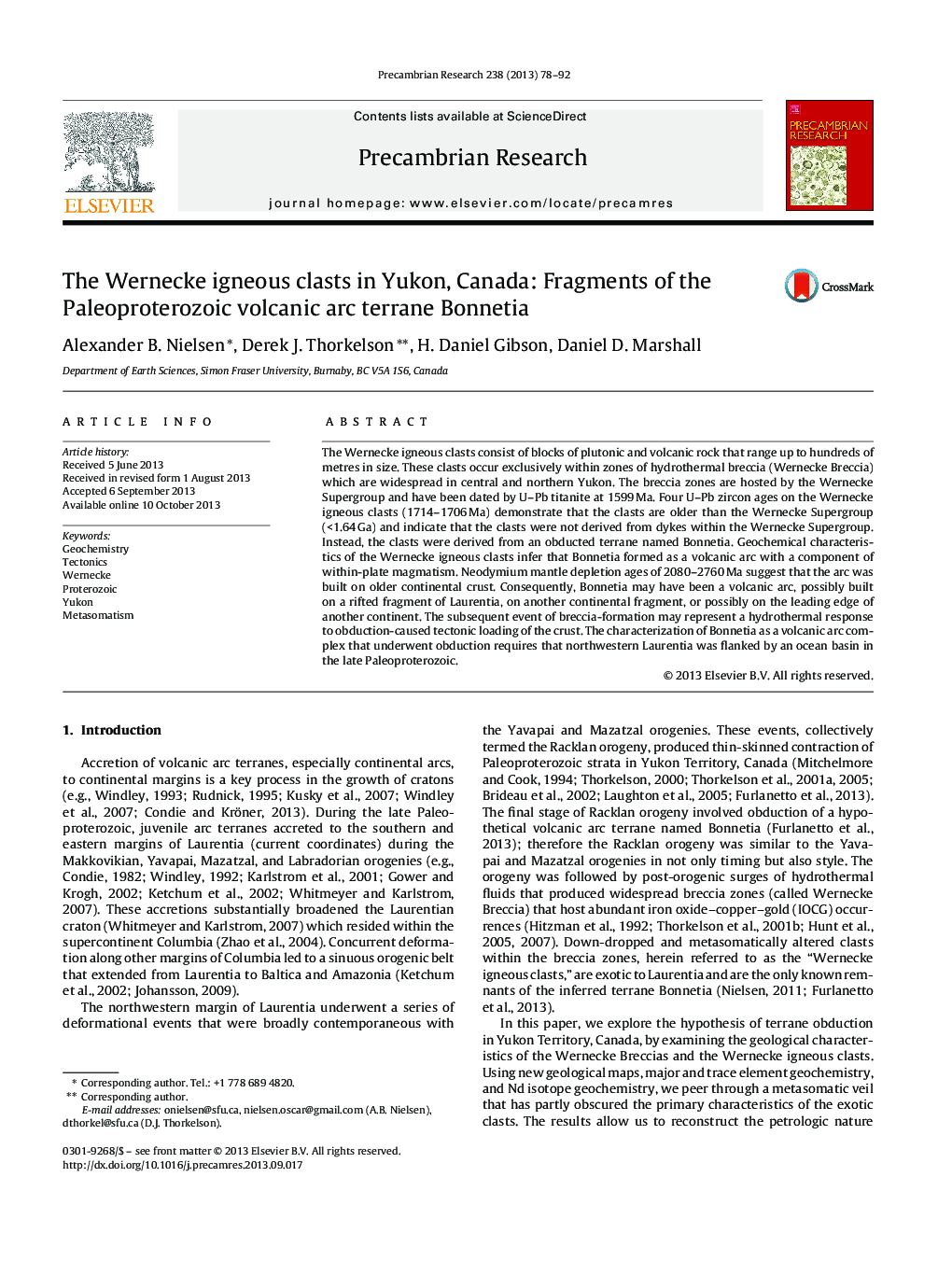| کد مقاله | کد نشریه | سال انتشار | مقاله انگلیسی | نسخه تمام متن |
|---|---|---|---|---|
| 4723190 | 1639636 | 2013 | 15 صفحه PDF | دانلود رایگان |

• The Wernecke igneous clasts are exotic to Laurentia.
• Three different types of Wernecke igneous clast are identified and characterized.
• They were derived from a calc-alkaline volcanic arc with an intraplate component.
• The volcanic arc formed on continental crust and/or sourced magma from non-depleted mantle.
• Laurentia was flanked by an ocean basin in the late Paleoproterozoic.
The Wernecke igneous clasts consist of blocks of plutonic and volcanic rock that range up to hundreds of metres in size. These clasts occur exclusively within zones of hydrothermal breccia (Wernecke Breccia) which are widespread in central and northern Yukon. The breccia zones are hosted by the Wernecke Supergroup and have been dated by U–Pb titanite at 1599 Ma. Four U–Pb zircon ages on the Wernecke igneous clasts (1714–1706 Ma) demonstrate that the clasts are older than the Wernecke Supergroup (<1.64 Ga) and indicate that the clasts were not derived from dykes within the Wernecke Supergroup. Instead, the clasts were derived from an obducted terrane named Bonnetia. Geochemical characteristics of the Wernecke igneous clasts infer that Bonnetia formed as a volcanic arc with a component of within-plate magmatism. Neodymium mantle depletion ages of 2080–2760 Ma suggest that the arc was built on older continental crust. Consequently, Bonnetia may have been a volcanic arc, possibly built on a rifted fragment of Laurentia, on another continental fragment, or possibly on the leading edge of another continent. The subsequent event of breccia-formation may represent a hydrothermal response to obduction-caused tectonic loading of the crust. The characterization of Bonnetia as a volcanic arc complex that underwent obduction requires that northwestern Laurentia was flanked by an ocean basin in the late Paleoproterozoic.
Schematic history of the Wernecke igneous clasts and the accretion of Bonnetia to Laurentia.Figure optionsDownload as PowerPoint slide
Journal: Precambrian Research - Volume 238, November 2013, Pages 78–92